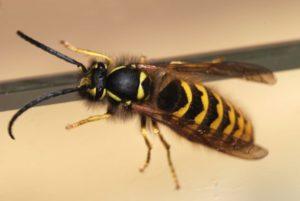Who Eats Wasps: 14 Stinging Insect Hunters
Wasps are known for their feisty nature and occasional aggression. They themselves are predators and eat various small insects. But for every predator, someone who is higher in the food chain will find.
Content
Features of the character of wasps
Wasps can be of two types - publicliving in a group or alone. Everyone is dangerous, but those living in a pack are more likely to show aggression.
They have a sting, which is a way of introducing a poisonous substance under the skin of the victim. It, unlike the sting of bees, does not remain inside the victim, so wasps can sting their victims more than once in case of aggression.
Who eats
Even the most harmful and dangerous wasps have their hunters. There are representatives of an animal species who are not afraid of stabbing sting. Some cultures eat wasp larvae cooked in oil.
Members of the same genus
So, no matter how paradoxical it may seem, wasps have some kind of species cannibalism. It often happens that larger species can prey on smaller ones. Very often smaller tribesmen are attacked hornets.
Invertebrates
There are some representatives of invertebrates that can eat striped hunters. This:
- some dragonflies;
- journal;
- ktyri and beetles;
- night butterflies.
Vertebrate animals
Some individuals feed only on larvae, which are harvested in combs. But there are those animals that are not afraid of flying individuals. These include:
- caresses;
- rats;
- badgers;
- skunks;
- the Bears;
- wolverines.
Birds
There are several types of birds that do not mind feeding on larvae and adult bees. These are the white-bellied swift, willow warbler and pied flycatcher.
There are two types of birds that kill wasps in large numbers.
Wasp defense mechanism
Of course, the most basic means of protecting wasps is the sting. They inject poison under the skin of their prey, which has a poisoning and paralyzing effect.
The bite of the wasp for a person, it can be fraught with just itching, slight numbness and unpleasant pain. But for those who are prone to allergies, problems can be more serious, up to anaphylactic shock.
Conclusion
Each predator poses a threat to one or another species of insects. But, as you know, everything in nature is arranged in such a way that all animals are beneficial. So wasps, although they do a lot of harm, are part of the diet of some animals.
Previous

How can a hoverfly eat a wasp???? nonsense ... and about bloodthirsty night butterflies, too, doubts torment